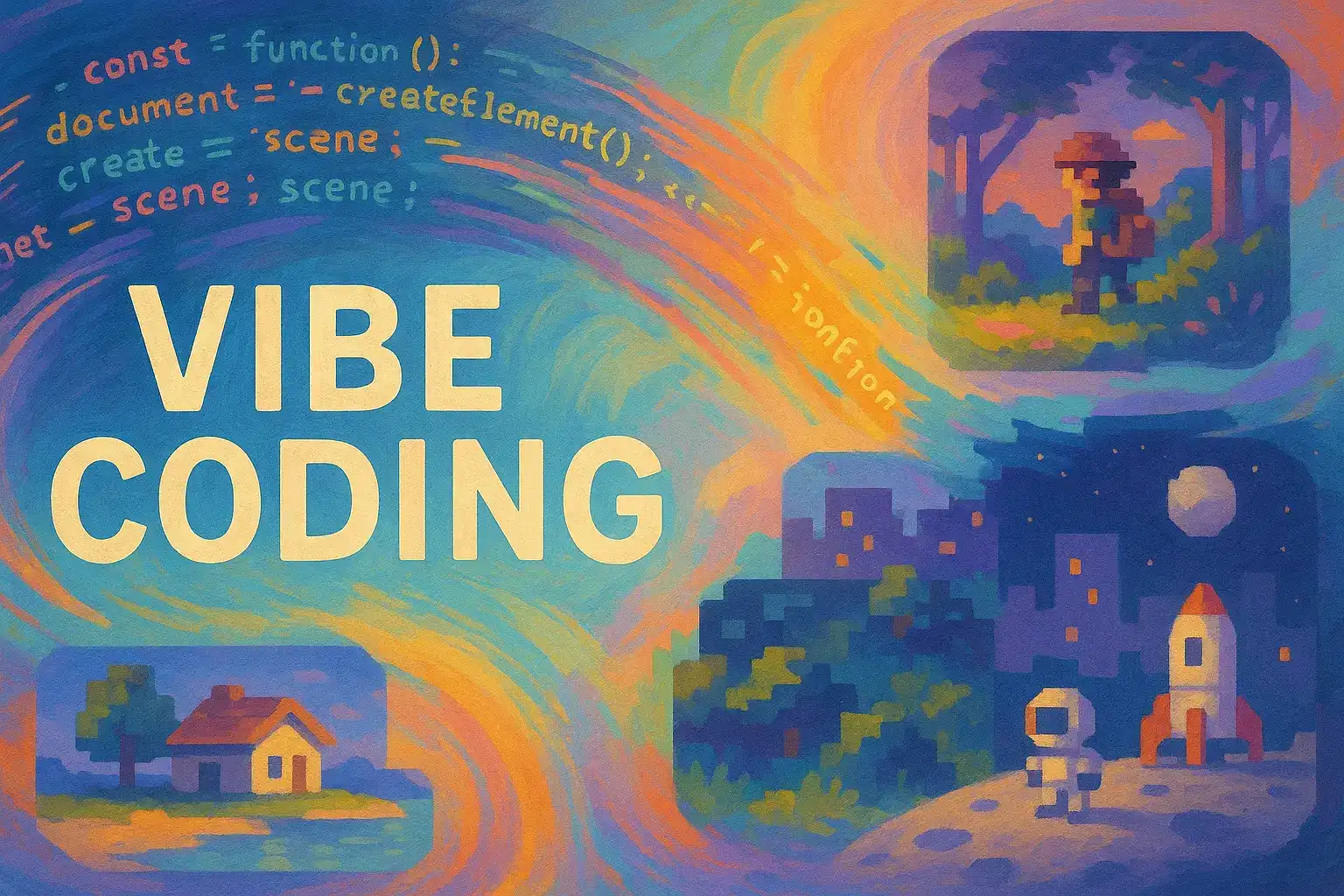An interesting shift is happening in how developers are creating games. You might have seen people sharing impressive web games they built in record time with AI assistance. This approach has a name: "vibe coding". It's redefining the relationship between developers and their code.
What Is Vibe Coding, Really?
Coined by Andrej Karpathy (former OpenAI researcher) in February 2025, vibe coding isn't about AI generating entire games from scratch. Rather, it describes a development workflow where you "give in to the vibes" and stop worrying about understanding every line of code.
In traditional development, you carefully craft each function, review every change, and maintain full comprehension of your codebase. With vibe coding, you collaborate with AI tools like advanced code assistants, focusing on outcomes rather than implementation details.
The developer remains in control of the creative vision but outsources much of the technical execution to AI. As Karpathy described it, you're building something, but it doesn't feel like coding in the traditional sense.
The Vibe Coding Workflow
What makes this approach distinct:
-
Voice-to-code: Many developers use voice transcription to tell their AI assistant what changes to make ("make the jump height higher" or "add a particle effect when collecting coins")
-
Accepting suggestions blindly: Rather than carefully reviewing AI-generated code, vibe coders often accept changes without reading them, trusting the AI to handle implementation details
-
Error handling: Instead of debugging traditionally, developers simply copy-paste error messages to the AI and let it figure out solutions
-
Working around problems: When bugs arise, vibe coders might request alternative approaches rather than fixing root causes
-
Growing beyond comprehension: The resulting code often expands beyond what the developer fully understands, yet somehow works
Web Games: The Perfect Vibe Coding Playground
This approach is particularly well-suited for web game development. JavaScript and libraries like Three.js allow for quick iteration, and the browser provides immediate feedback. Plus, AI assistants have extensive knowledge of web technologies.
We're seeing impressive results:
- Simple 3D exploration games built in hours rather than days
- Physics-based puzzlers created during weekend game jams
- Procedurally generated worlds where the developer focused purely on concept and aesthetics
The games aren't necessarily complex, but they're playable, often visually striking, and created with remarkably little traditional coding effort.
The Trade-offs
Vibe coding isn't without drawbacks. The resulting code can be inefficient, buggy, or difficult to maintain. But for rapid prototyping, game jams, or personal projects, these limitations might not matter much.
This approach likely won't replace traditional development, in the short term, for commercial games requiring precise mechanics and optimization. But it creates a space where technical barriers no longer prevent creative ideas from becoming playable experiences.
Democratizing Game Creation
Perhaps the most exciting aspect of vibe coding is how it's opening game development to more people. Those without years of programming experience can now create interactive experiences by focusing on the creative vision and letting AI handle technical implementation.
It's shifting the emphasis from "how do I code this?" to "what kind of experience do I want to create?" That's a powerful change that could bring fresh voices and ideas into game development.
What's Next?
As AI coding assistants continue to improve, we'll likely see the quality and complexity of vibe-coded games increase. The line between traditional development and this more collaborative approach may blur further.
At Sandscape, we're exploring how AI can make game creation more accessible while maintaining creative control for developers. Vibe coding represents one fascinating path toward that future.
Sebastien Nadeau & The Sandscape Team
